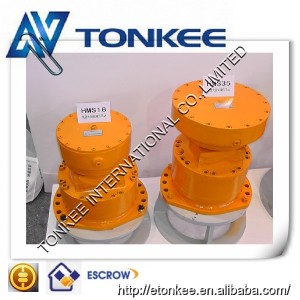
Size and Form Factor: Compactness is a defining feature of these reducers.
They are designed to be space-efficient, making them suitable for applications with limited installation space. The overall size and form factor depend on the intended use and can vary significantly.
Reduction Ratio: The reduction ratio defines the relationship between input and output speeds. It is specified as a numerical value (e.g., 5:1 or 10:1), indicating how many times the input speed is reduced to achieve the desired output speed. Selecting the appropriate reduction ratio is essential for matching the reducer to the application's requirements.
Input Speed: The maximum allowable input speed is a crucial specification. It is typically measured in rotations per minute (RPM) and must be carefully considered to ensure the reducer can handle the speed of the source machinery.
Output Speed: The output speed is the target speed to be achieved after reduction. It is specified in RPM and must align with the requirements of the driven machinery.
Torque Capacity: Torque capacity is the maximum amount of rotational force that the reducer can transmit without failure. It is often specified in units like Newton-meters (Nm) or foot-pounds (ft-lbs). Ensuring that the reducer can handle the required torque is essential to prevent overloading and potential damage.
Efficiency: Efficiency represents the percentage of input power that is effectively transferred to the output. Reducers typically have an efficiency rating that can range from 85% to 98%. High-efficiency reducers are desirable for energy-saving applications.
Mounting Configuration: The mounting configuration, such as flange or base mounting, determines how the reducer is attached to the machinery and must align with the specific installation requirements.
Materials and Construction: The materials used in the construction of the reducer affect its durability and resistance to environmental factors. Common materials include stainless steel, cast iron, and aluminum, each with its own set of benefits and limitations.
Lubrication and Sealing: Proper lubrication and sealing are critical for the long-term performance and durability of the reducer. Specifications for the type of lubricant required and the sealing mechanisms employed should be provided.
Operating Temperature Range: The operating temperature range specifies the minimum and maximum temperatures at which the reducer can safely function. It's essential to ensure that the reducer can operate within the environment's temperature conditions.
Service Life and Maintenance: Manufacturers often provide estimated service life information based on factors like load, speed, and operating conditions. Maintenance requirements, including recommended service intervals and procedures, should be detailed.
Noise and Vibration Levels: Specifications for noise and vibration levels can be important in applications where minimizing noise and vibration is crucial, such as in precision machinery or quiet working environments.



 English
English Русский язык
Русский язык





